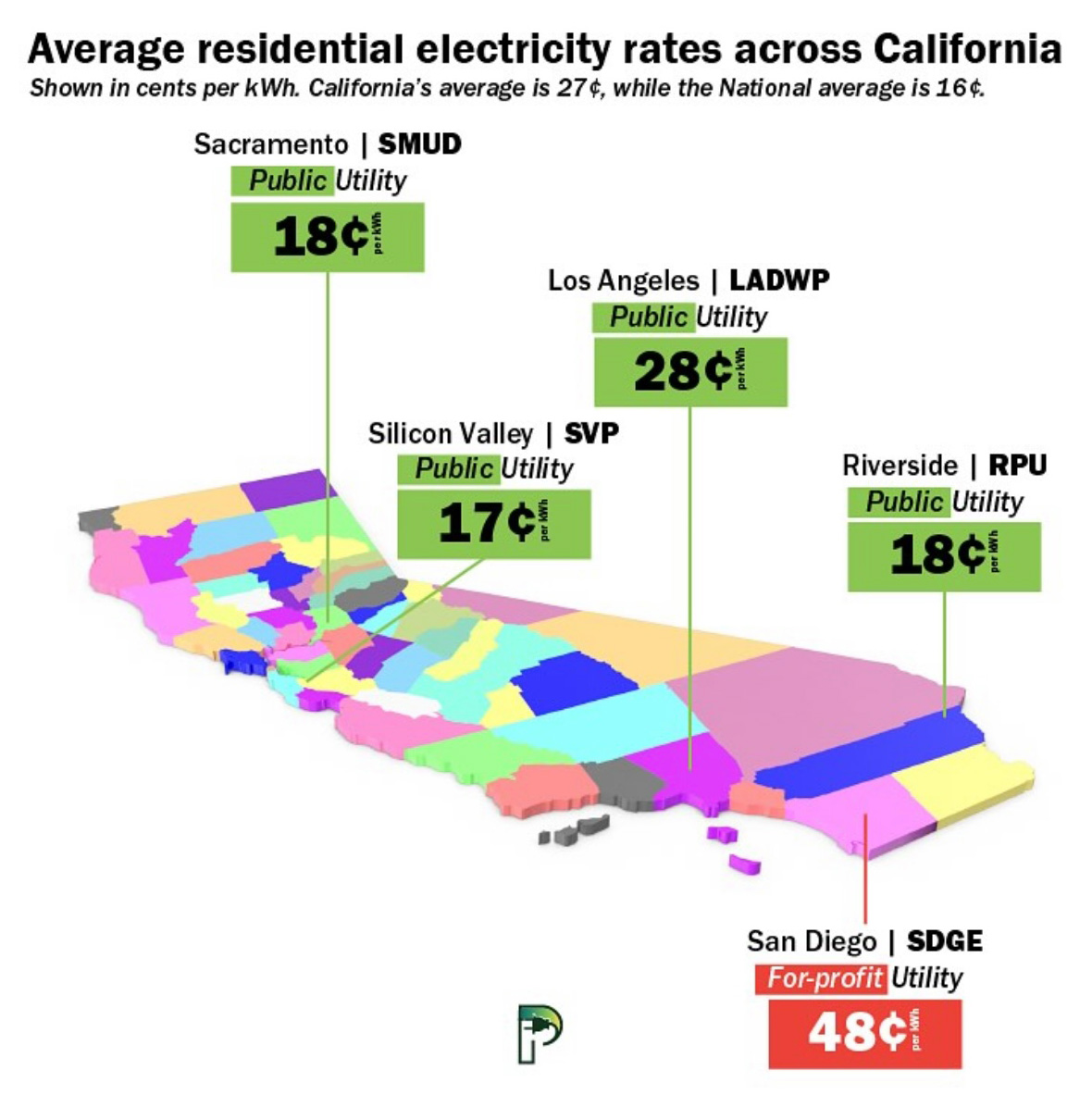San Diegans pay among the highest electric rates in the country. Even worse, the rates are proposed to rise each year for the next three years.
If you think your bills are high now, they will be rising each year into the future.
Public Power San Diego advocates for a community-owned, independently run, no-profit electric utility committed to locally produced and distributed clean and sustainable energy.
A NO-PROFIT ELECTRICITY SOLUTION WILL PROVIDE:
Lower Costs
Increased Security
Cleanest Electricity
What can be done?
Public Power San Diego seeks to lower our bills and bring local control by creating a no-profit public utility. A no-profit utility for San Diego will tap our abundant sunshine by building solar on local rooftops and parking lots along with safe, local battery storage. This approach costs less and is more secure than the utilities emphasis on expensive and fire-prone transmission built through pristine lands to generating stations on precious open lands. Replacing SDGE with a no-profit utility would reduce rates beginning by at least 20% with more savings to come.
We need your help. This is a David & Goliath battle.
Please sign-up for our email list to receive updates.

